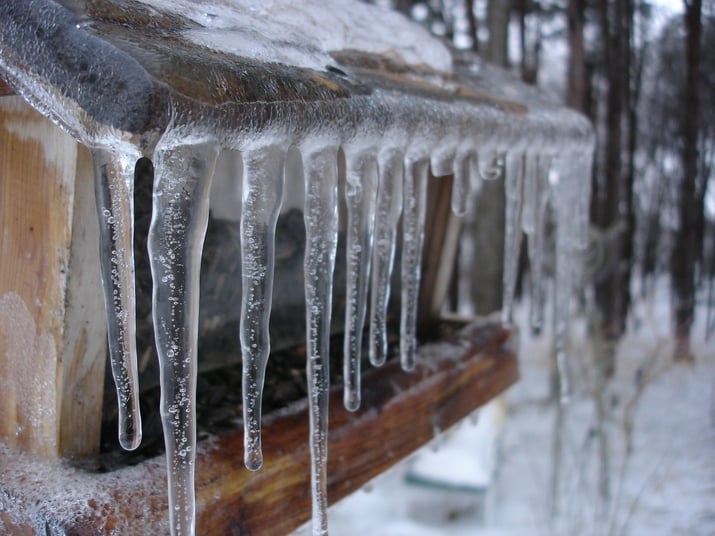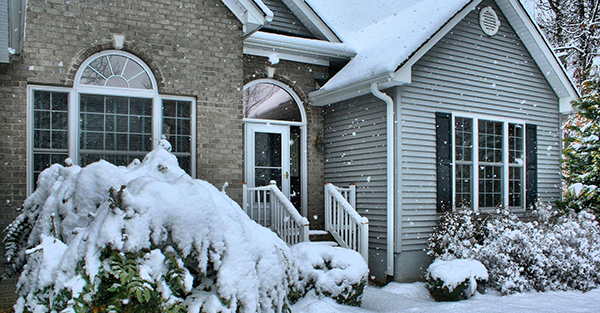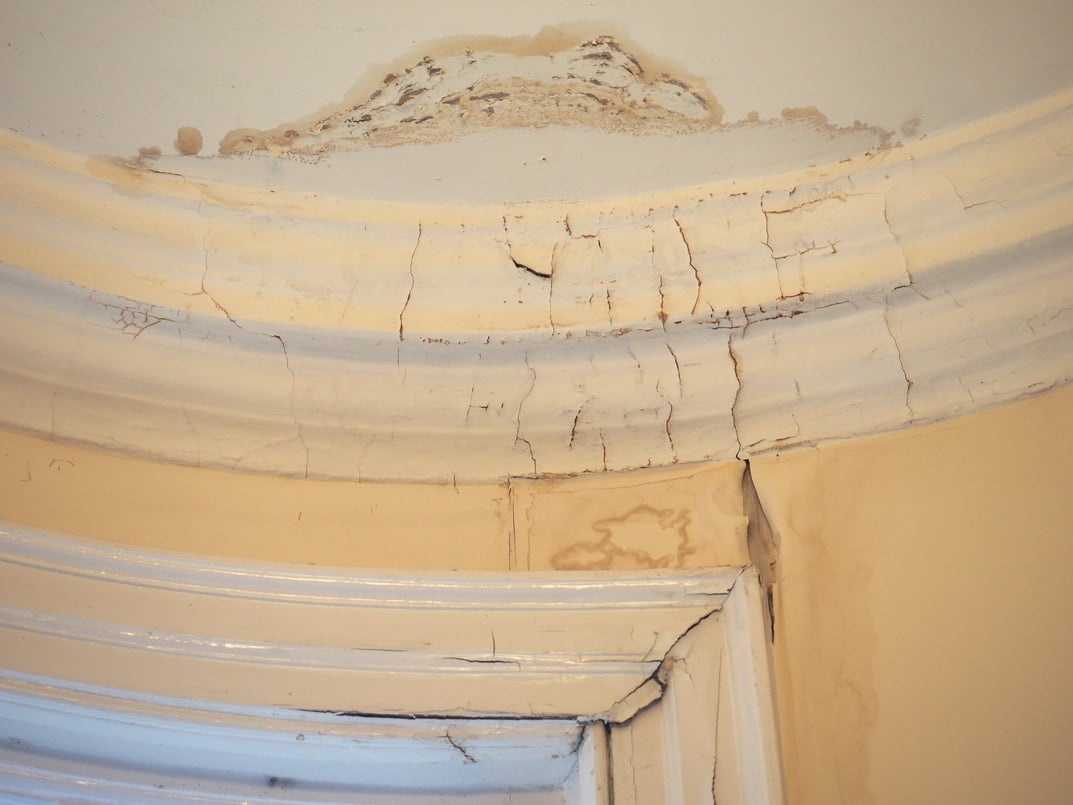
An “ice dam” is another name for the thick ridge of ice that can form around the eaves of your roof. These devilish buildups can cause damage to your gutters and leaks in your roof (which can lead to structural damage, mold formation, and damage to the inside of your home).
What causes ice dams?
When winter storms dump snow, it piles up on roofs. If heat from the inside of a home is seeping out through the roof, making the roof warmer than the outside temperature, the bottom layer of the snow starts to melt. On sloped roofs, the melting snow trickles and slides down the roof. The edges of the roof, however, are usually colder, since they hang over air rather than sitting on top of the heated home. When the melting snow gets to the colder edges, it freezes; over time, a mound of ice builds up, weighing down gutters and creating a situation that encourages roof leaks.
Some melting and freezing occurs naturally during warmer days and cooler nights, but most ice dam formation is due to poor attic insulation, or an aging or damaged roof, both of which contribute to a warmer-than-ideal roof.
Is an ice dam causing my roof to leak?
Dams can cause significant damage to your roof, as the melting runoff is trapped behind the dam and begins to seep under your shingles. Eventually, it will work its way into your home’s attic, insulation, and exterior walls beneath the eaves. This infiltration can cause your home’s structure to rot, allow the growth of hazardous mold, impact your indoor air quality, and cause damage to your sheetrock and paint. Eventually, the water that seeps under the shingles can seep into your home’s interior walls and down the ceilings, causing visible staining and leakage inside your home. By the time this occurs, you will likely have suffered significant damage to your roof and your home’s structure.
Ice dam buildup can damage your gutters as it prevents them from successfully draining water away from your roof and foundation. The weight of the dam can cause gutters to sag, detach, or break. If an ice dam detaches from the roof, it can be a significant hazard, since falling ice is both heavy and sharp! This can cause damage to property or harm to people who may be below the fall zone. Plus, as it detaches from the roof, the adhered ice can rip off shingles, gutters, and even parts of the roof underlayment.
How do you prevent ice dams from forming?
Keeping your roof clear of snow by using a roof rake or shovel can help prevent ice dams, but this is only a temporary fix. To prevent damage from ice dams more comprehensively, you must ensure that your roof stays below 30 °F during freezing weather. This can be done by using appropriate attic insulation and ventilation as well as installing heat cables to minimize ice formation and retention on your roof. Sealing all points where heat is leaking from your living space through your roof and installing additional insulation in your attic will likely help significantly if you struggle with ice damming.
What should you do if you have ice dams?
If ice dams have already formed on your home, you must remove the ice safely and carefully without causing damage to your roof, shingles, or gutters. Improper removal can result in exactly the kind of damage you want to prevent and cause leaks or water infiltration. This can require you to make roof repairs or replace your roof during the difficult winter season. Hire a professional to remove existing ice dams without causing damage.
To avoid having to deal with ice dams this winter, you should prepare now. Have a roofing professional inspect your roof and your attic insulation to explore your options for ice dam prevention. You won't have to worry about ice dam formation this winter or ever again, and you'll make your entire home more comfortable and energy efficient. Contact Hedrick Construction today to schedule a consultation and get a free estimate for roofing services on your Ankeny, Ames, Huxley, or Des Moines home.








Comments